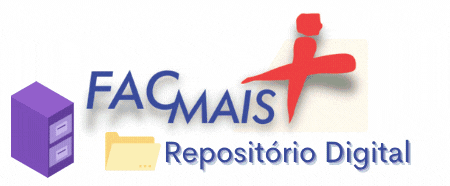Use este identificador para citar ou linkar para este item:
http://65.108.49.104:80/xmlui/handle/123456789/545Registro completo de metadados
| Campo DC | Valor | Idioma |
|---|---|---|
| dc.creator | SOUZA, Maria Selma Pereira | - |
| dc.date.accessioned | 2022-10-12T00:06:48Z | - |
| dc.date.available | 2022-08-10 | - |
| dc.date.available | 2022-10-12T00:06:48Z | - |
| dc.date.issued | 2022-08-10 | - |
| dc.identifier.uri | http://65.108.49.104:80/xmlui/handle/123456789/545 | - |
| dc.description.abstract | This dissertation was developed within the research line Education, Institutions and Educational Policies (EIPE) of the Strictu Sensu Graduate Program - Academic Master's Degree in Education of the Faculty of Inhumas - FacMais. The inclusion of students with high abilities/super ability in the education system of the state of Goiás was addressed. The following question-problem guided the study: how has the Department of Education of the State of Goiás organized itself to meet the public policies for inclusion and, especially, how it deals with students with high abilities/super ability in basic education schools? Thus, the general objective is to identify and analyze the inclusion public policies and the direction of the state of Goiás in relation to students with characteristics of high abilities/super ability in basic education schools. The specific objectives were: to understand the historical aspects that permeate the special and inclusive education; to identify the inclusion policies; to conceptualize high abilities/super ability; and to analyze the policies for special and inclusive education in the state, in order to understand the perspective of meeting the demands of this public. From the methodological point of view, a qualitative, bibliographic, and documental research was carried out. From the conceptual point of view, to clarify issues related to the theme, the study was based on several authors who address the subject. As for the organization of the research, the text was divided into three chapters: in the first, the historical and conceptual aspects of special and inclusive education were highlighted, as well as the public educational policies aimed at inclusion; in the second, concepts were highlighted and some reflections on high abilities/super ability were woven, highlighting the role of the family in the diagnosis and development of children with these characteristics; finally, in the third chapter, we proceeded to the analysis of educational policies and the inclusion of these students. It was observed that, although several policies have been developed to meet the specificities of these subjects, broader transformations are still needed. | pt_BR |
| dc.language | por | pt_BR |
| dc.publisher | Faculdade Facmais | pt_BR |
| dc.rights | Acesso Aberto | pt_BR |
| dc.subject | Altas habilidades/superdotação | pt_BR |
| dc.subject | Políticas públicas de educação especial e inclusiva | pt_BR |
| dc.subject | Estado de Goiás | pt_BR |
| dc.title | POLÍTICAS EDUCACIONAIS E A INCLUSÃO DE ALUNOS COM ALTAS HABILIDADES/SUPERDOTAÇÃO NO ESTADO DE GOIÁS: LIMITES E POSSIBILIDADES | pt_BR |
| dc.type | Dissertação | pt_BR |
| dc.creator.Lattes | http://lattes.cnpq.br | pt_BR |
| dc.contributor.advisor1 | LÔBO, Daniella Couto | - |
| dc.contributor.advisor1Lattes | http://lattes.cnpq.br | pt_BR |
| dc.description.resumo | Esta dissertação foi desenvolvida dentro da linha de pesquisa Educação, Instituições e Políticas Educacionais (EIPE) do Programa de Pós-graduação Strictu Sensu – Mestrado Acadêmico em Educação da Faculdade de Inhumas – FacMais. Abordou-se a inclusão de alunos com altas habilidades/superdotação no sistema de ensino do estado de Goiás. A seguinte pergunta-problema norteou o estudo: como a Secretaria de Educação do Estado de Goiás tem se organizado para atender às políticas públicas de inclusão e, especialmente, como lida com estudantes com altas habilidades/superdotação nas escolas da educação básica? Assim, o objetivo geral é o de identificar e analisar as políticas públicas de inclusão e o direcionamento do estado de Goiás em relação aos alunos com características de altas habilidades/superdotação nas escolas da educação básica. Os objetivos específicos foram: compreender os aspectos históricos que permeiam a educação especial e inclusiva; identificar as políticas de inclusão; conceituar altas habilidades/superdotação; e analisar as políticas voltadas para a educação especial e inclusiva no estado, de modo a perceber a perspectiva de atendimento às demandas desse público. Para tanto, realizou-se uma pesquisa qualitativa, de cunho bibliográfico e documental. Do ponto de vista conceitual, para esclarecer questões relacionadas com o tema, o estudo amparou-se em diversos autores que abordam o assunto. Quanto à organização da pesquisa, o texto foi dividido em três capítulos: no primeiro, foram destacados os aspectos históricos e conceituais acerca da educação especial e inclusiva, bem como as políticas públicas educacionais voltadas para a inclusão; no segundo, foram evidenciados conceitos e tecidas algumas reflexões sobre altas habilidades/superdotação, ressaltando o papel da família no diagnóstico e no desenvolvimento de crianças que apresentam essas características; por fim, no terceiro capítulo, procedeu-se à análise em torno das políticas educacionais e a inclusão desses estudantes. Observou-se que, embora tenham sido elaboradas diversas políticas para atender às especificidades desses sujeitos, ainda são necessárias transformações mais amplas. | pt_BR |
| dc.publisher.country | Brasil | pt_BR |
| dc.publisher.department | Departamento 1 | pt_BR |
| dc.publisher.program | PPG1 | pt_BR |
| dc.publisher.initials | FACMAIS | pt_BR |
| dc.subject.cnpq | CNPQ::CIENCIAS HUMANAS::EDUCACAO | pt_BR |
| Aparece nas coleções: | Dissertações do Mestrado | |
Arquivos associados a este item:
| Arquivo | Descrição | Tamanho | Formato | |
|---|---|---|---|---|
| MARIA SELMA.pdf | 1.38 MB | Adobe PDF | Visualizar/Abrir |
Os itens no repositório estão protegidos por copyright, com todos os direitos reservados, salvo quando é indicado o contrário.
